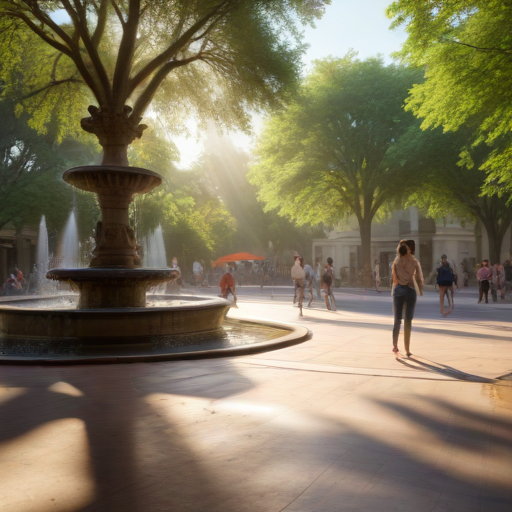The construction of a prominent 13-story high-rise apartment tower in Columbus began in November 1976, as a cornerstone of the larger Mt. Vernon Plaza urban renewal project. This initiative spanned 26 acres on the Near East Side and included not only the 226 apartment units but also 150 townhouses and a shopping center featuring 30 stores.
Strategically located within boundaries of Atcheson Street to the north, North 20th Street to the east, Mt. Vernon Avenue to the south, and Monroe Avenue to the west, the project boasted an amphitheater adorned with benches and sculptures. Notably, President Jimmy Carter graced the dedication ceremony on September 23, 1978, which attracted thousands of attendees eager to hear him speak and celebrate the completion of Mt. Vernon Plaza.
Initiatives for the plaza can be traced back to 1970 when the Columbus Department of Development sought a planning grant to explore potential developments, identified through community input via house-to-house surveys. Residents voiced a clear need for a shopping center and enhanced low-income housing.
To realize this vision, the city partnered with the Neighborhood Development Corporation, securing funding from the U.S. Department of Housing and Urban Development. However, the project required the city to exercise eminent domain, displacing approximately 200 residents and several business owners to facilitate construction.
Despite a budget of $13 million, the project faced numerous delays and hurdles that led many to question its feasibility. During the dedication ceremony, the completed high-rise bore a large banner stating, “Out of the Past a Brilliant New Future,” which captured the community’s aspirations for revitalization and progress.
Unfortunately, Mt. Vernon Plaza did not fully meet the anticipated potential, and the hopes tied to its development were largely left unfulfilled.
This story serves as a reminder of the complexities often involved in urban development and renewal projects. While Mt. Vernon Plaza may not have succeeded as initially envisioned, it still stands as a symbol of community efforts and aspirations for a better future. Looking ahead, there are opportunities for revitalization and redevelopment that can pave the way for new growth and community engagement in the area.
